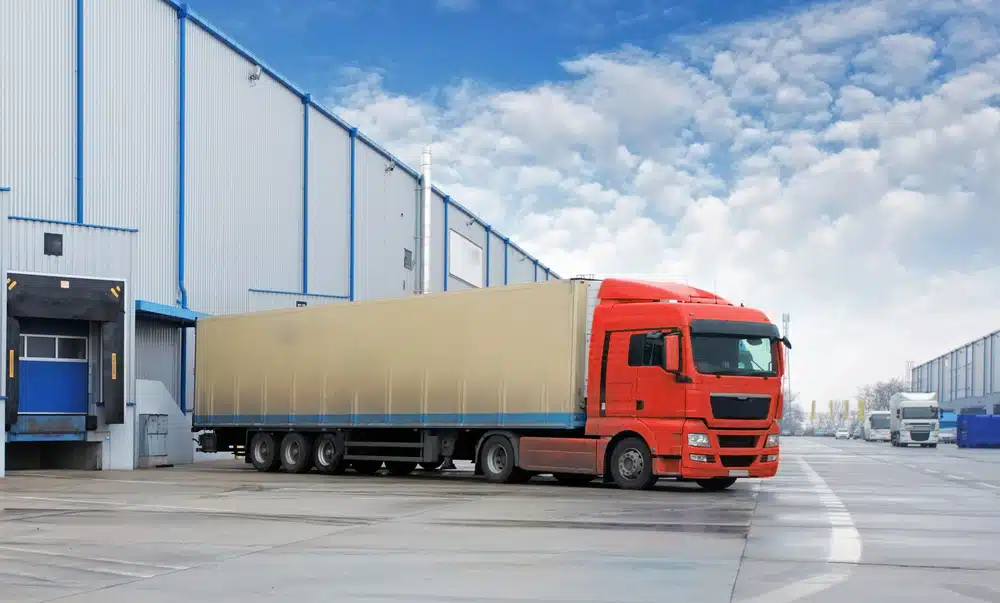Article At A Glance
- This method is vital for optimizing supply chain efficiency, especially when dealing with diverse transportation modes like rail, road, and sea.
- Benefits include cost savings, enhanced flexibility, and reduced environmental impact.
- The process also supports sustainability efforts by reducing transportation costs and carbon footprint.
Efficient supply chain management is vital for businesses to stay competitive, especially in industries like food and beverage. Transloading simplifies logistics by transferring goods between transportation modes, offering flexibility, cost savings, and improved efficiency. This process ensures timely deliveries and optimized operations, meeting customer demands while maintaining product quality.
Discover how transloading can transform your food supply chain and pave the way for greater success.
Transloading: Definition and Concept
Transloading is a logistics process that involves transferring goods from one mode of transportation to another during their journey to the final destination. For example, products may be moved from a shipping container on a freight train to a truck for last-mile delivery. This process is essential for optimizing supply chain efficiency, particularly when dealing with diverse transportation modes like rail, road, and sea.
Transloading allows businesses to overcome the limitations of using a single mode of transportation, ensuring cargo reaches its destination with greater efficiency and reduced costs. At the heart of this process are transloading facilities, which provide the necessary equipment and space to manage goods seamlessly during transit transitions. This adaptability is especially vital in industries where speed and reliability are paramount, such as food and beverage, manufacturing, and retail.
Benefits of Transloading
Transloading offers numerous advantages for businesses looking to optimize their supply chains.
Key Benefits of Transloading:
- Cost Savings: Reduce overall transportation expenses by combining modes of transport efficiently.
- Enhanced Flexibility: Adapt to changing demands with greater ease.
- Reduced Environmental Impact: Minimize carbon emissions through smarter logistics choices.
By streamlining logistics operations, transloading helps businesses achieve better customer satisfaction and increased profitability, making it a valuable strategy in today’s competitive market.
Improved Efficiency and Cost Savings
Improved Supply Chain Efficiency
Transloading enhances supply chain efficiency by consolidating shipments and using different transportation modes. For example, businesses can use rail for long-haul transport and trucks for shorter distances, reducing both transit times and shipping costs.
Avoiding Transportation Bottlenecks
Transloading helps prevent delays by allowing businesses to reroute shipments or switch modes when needed. This flexibility ensures timely deliveries and reduces disruptions caused by issues like adverse weather or sudden demand surges.
Cost Savings on Storage
Transloading facilities can also serve as temporary storage hubs. This reduces storage expenses while enabling smooth transitions between transportation modes. Businesses can optimize inventory levels and reinvest the savings into areas like marketing or product development.
Enhanced Flexibility and Scalability
Transloading logistics allows businesses to adapt to changing demands and market conditions. For example, companies can scale their operations during peak seasons by increasing the volume of goods transferred through transloading facilities. This flexibility ensures they can meet customer demands without overextending resources.
Transloading services enable businesses to access a broader range of transportation options. Whether shipping bulk materials, temperature-sensitive goods, or oversized cargo, transloading facilities can handle diverse product types, ensuring a seamless transition between modes. This flexibility also allows businesses to expand into new markets by optimizing routes and reducing logistical barriers.
Scalability is another advantage, as transloading facilities can accommodate fluctuating shipment volumes. For instance, a food company experiencing seasonal demand spikes can rely on transloading to efficiently manage the increased flow of goods, ensuring on-time delivery without compromising quality.
Reduced Transportation Costs and Carbon Footprint
Transloading can significantly lower transportation costs by optimizing routes and using more energy-efficient transport modes.
Cost Savings Example
Rail transport is often cheaper and more eco-friendly than road freight for long distances. Pairing it with truck delivery for shorter routes creates a balanced and cost-effective logistics strategy.
Environmental Benefits
Transloading also reduces the carbon footprint of supply chain operations. By consolidating shipments and maximizing container capacity, businesses can minimize trips, lower emissions, and shrink their environmental impact.
Competitive Advantage
In industries like food and beverage, where sustainability is increasingly important to consumers, transloading offers a key advantage. It allows businesses to prioritize sustainability while staying cost-effective.
Industries and Use Cases for Transloading
Transloading is an essential logistics solution used across various industries, including food and beverage, manufacturing, retail, and construction. Its versatility allows it to handle different types of cargo and address unique logistical challenges.
Food and Beverage Industry
In the food sector, transloading ensures the timely delivery of perishable goods. Temperature-controlled facilities enable smooth transitions for frozen or refrigerated products, preserving their quality during transport. Businesses shipping bulk grains or packaged foods also benefit from the cost savings and efficiency transloading provides.
Additional Read: Why Local Wholesale Food Suppliers Are the Best Option for Restaurants
Construction Sector
In construction, transloading simplifies the transport of oversized or heavy materials like steel beams or machinery. These items often require specialized equipment, and transloading ensures they are moved safely and efficiently.
Retail Industry
For retail, transloading is key to managing high volumes of goods. It supports the timely distribution of products to stores or fulfillment centers, helping businesses meet customer demands.
Transloading vs. Traditional Logistics: A Comparative Analysis
Compared to traditional logistics, transloading offers greater flexibility and efficiency. Traditional logistics often rely on a single mode of transport, which can lead to inefficiencies and higher costs when dealing with complex supply chains. Transloading allows businesses to combine multiple transportation modes, optimizing routes and reducing transit times.
While traditional logistics may be suitable for straightforward supply chains, transloading is better equipped to handle the complexities of modern logistics. It allows businesses to navigate challenges such as fluctuating demand, transportation disruptions, and diverse cargo requirements. For example, a company relying solely on trucking may face significant delays during peak traffic periods, whereas a transloading approach could mitigate these issues by integrating rail or sea transport.
Common Transloading Challenges
Despite its many benefits, transloading comes with its own set of challenges. These include:
- Coordination Issues: Ensuring seamless communication and coordination between different transportation providers can be difficult, particularly when dealing with multiple modes of transport.
- Cargo Handling Risks: Improper handling during the transfer process can damage or lose products, especially fragile or perishable items.
- Infrastructure Limitations: Not all regions have access to well-equipped transloading facilities, which can limit the effectiveness of this strategy.
- Regulatory Compliance: Navigating customs regulations and ensuring compliance with local laws can complicate transloading operations.
Addressing these challenges requires careful planning and the support of experienced transloading companies that understand the intricacies of logistics. Partnering with a reliable provider can help businesses mitigate risks and ensure smooth operations.
B&B Food Services' Winning Approach to Shipping and Logistics
At B&B Food Services, we specialize in providing comprehensive transloading services tailored to the unique needs of food businesses. Our state-of-the-art transloading facilities are equipped to handle a wide range of products, including temperature-sensitive goods, bulk materials, and packaged items.
Our approach to transloading focuses on efficiency, reliability, and sustainability. We work closely with our clients to develop customized logistics strategies that streamline their supply chains and reduce costs. By leveraging our expertise, businesses can:
- Ensure timely delivery of products to their destinations.
- Minimize risks associated with cargo handling.
- Optimize transportation routes for maximum efficiency.
For example, one of our recent projects involved helping a regional food distributor manage seasonal demand surges. By utilizing our transloading services, the client was able to efficiently transfer bulk shipments from rail to truck, ensuring on-time deliveries to retail locations without overburdening their internal logistics team.
Whether you’re looking for transloading companies to handle your shipments or seeking a logistics partner to enhance your supply chain operations, B&B Food Services is here to help. Contact us today to learn more about our transloading logistics solutions and how we can support your business.

